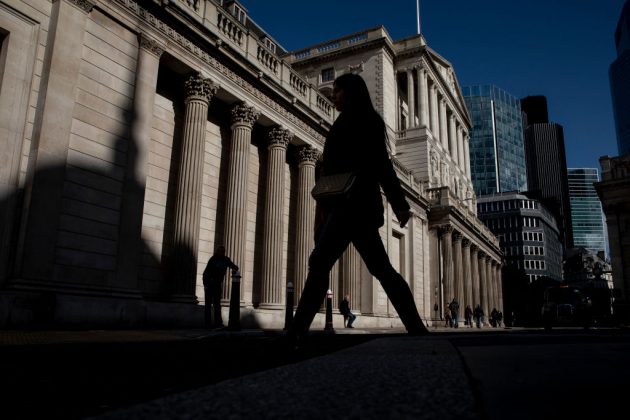Andrew Bailey faces another tough year at Bank of England in 2021

Mark Carney must be thanking the gods he stepped down as Bank of England governor in early March.
Since then, his successor Andrew Bailey has had to steer the historic institution through the worst economic downturn in 300 years, complete with a bout of market panic in the spring.
Under Bailey’s leadership the Bank slashed interest rates to 0.1 per cent – their lowest level in history. And it has beefed up its bond-buying package to an unprecedented £895bn.
With the rollout of coronavirus vaccines the outlook has brightened considerably. But the new governor faces a daunting list of issues to confront in 2021.
Bank of England weighs 2021 Brexit uncertainty
Brexit negotiations are ongoing, with a great deal of uncertainty as to whether a free-trade agreement will be signed.
Under a no-deal Brexit the UK would fall on to World Trade Organization terms, raising tariffs in key areas such as agriculture and cars, with businesses facing new paperwork.
Economists say that the Bank would likely loosen monetary policy at either its February meeting or beforehand in an emergency decision.
This would most likely be through quantitative easing (QE). Under QE, it creates digital money to buy up bonds, putting billions of pounds into the economy.
The Bank is also likely to carry out “some kind of emergency liquidity measures just to shore up financial markets and provide confidence,” Tej Parikh, chief economist of the Institute of Directors, told City A.M.
Threadneedle Street would be “cautious about any more stimulus” if a deal is signed, Parikh said.
But the Bank would remain vigilant. It said in November that even a free-trade agreement would lead to some economic disruption in early 2021.
An uncertain recovery and negative interest rates
The arrival of effective coronavirus vaccines lifted spirits across the country before the latest bout of Covid gloom.
Ruth Gregory, senior UK economist at consultancy Capital Economics, told City A.M. that the vaccines should provide a major economic boost. She said they will help normal life return more quickly, spurring a rebound.
Gregory argued that the jabs mean negative interest rates will not be needed. The Bank added negative rates – which would charge banks to keep money at the BoE in an effort to make them lend it out – to its “toolbox” of possible measures for the first time this year.
“We don’t think that the Bank will need to turn to negative interest rates,” Gregory said. “In fact, we think the Bank will actually keep interest rates on hold at 0.1 per cent for the next four years.”
However, with new Tier 4 restrictions in place in much of the country, the economy still faces a tough time in the first quarter.

Climate change
Next year is a big one for the UK and climate change, as the country hosts the UN COP26 global climate summit.
The Bank will also have the environment on its mind as it plans to carry out its first climate stress test in the summer.
It will see how well banks and financial institutions would cope with three different climate scenarios. The Bank has previously said one of them will be “catastrophic”.
Bailey has also said the Bank will push for a change in how it buys assets, so its programmes do less to support polluters.
He said in October: “What I want to get to is from being what you might call completely neutral across the whole sector to saying, let’s be sort of ‘climate change consistent neutral’ [in purchases].”
However, this would involve negotiations with the Treasury. Bailey’s busy schedule may mean this gets pushed into 2022.
Ballooning corporate debt
Bailey will also be keeping a close eye on the huge amount of loans banks made to struggling companies in 2020 through various government-backed schemes.
Lobby group The City UK and auditor EY warned in July that firms could hold £100bn of unsustainable debt – much of it amassed during the crisis – by the spring.
Parikh said the Bank has “done a lot of stress-testing work already”. The tests mean the loan losses are unlikely to cause financial instability.
But the Bank is likely to encourage banks to keep lending to companies in 2021, as it has done repeatedly in 2020. It “might try to generally smooth banking and financial conditions” to ensure credit keeps flowing, Parikh said.